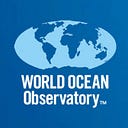Amazon Syndrome
When we look to the great biodiversity regions around the world, we look first to the Amazon, that spectacular cross-boundary watershed that descends from the Andes to the ocean across the multi-national borders, multiple ecosystems, and remote interior villages to great coastal cities on the east coast of South America — a massive hydraulic system, the health of which supports almost every living thing on Earth.
We also know that the Amazon has been under constant attack through deforestation, extractive industry, industrial farming, concurrent road construction, and displacement of villages, inhabitants, and species as tragic consequence. This history and its continuance today is a direct, conscious endeavor by trans-national corporations, banks, determined entrepreneurs, government agencies, all with the specific intent to exploit the profit derived from the consumption of natural resources until there is nothing of them left. Scale plays a part: the area is so vast that the full extent of the devastation is not fully realized, regardless of the evidence visible from space, the degraded land and water, the dislocation of inhabitants, and the evermore evident social debilitation and cultural distress — all this a set of associated symptoms, a syndrome.
The prospect is disturbing and dire. A recent study from Environment: Science and Policy for Sustainable Development by University of Florida geologist Robert Toovey Walker, concluded that the Amazon rainforest “will collapse and largely become a dry, shrubby plain by 2064. Development, deforestation and the climate crisis are to blame.” Among the additional causes and accelerants are increased government incentives in the form of loans and infrastructure spending, including roads and dams; scaled-up private sector finance due to growing interest in “emerging markets” and rising domestic wealth; surging demand for commodities like beef, soy, sugar, and palm oil. The present governments in Brazil, Argentina, and Peru are aligned with this practice, and indifferent to the pleas and efforts by environmental organizations and indigenous peoples to confront this ongoing rapacity and predation.
For more information on the Amazon rainforest crisis, I urge you to visit rainforests.mongabay.com for a fulsome compendium of facts and visualizations of Amazon deforestation over the past decades. It is well presented, however depressing.
What can be done? With the destruction, not only are the trees cleared and species lost, but the soil is also deprived of nutrients required to permit regrowth, so the problem becomes self-perpetuating, further exacerbated by extreme weather and erosion, fertilizers applied to vast new areas of industrial crops, and misguided human activity. There are organizations trying to address the problem through political motivation and action, and I invite you to visit AmazonWatch.org or AmazonConservation.org, two of the most active and successful.
What has been, and will continue to be lost? First, the incredible biodiversity of one of the last great wilderness areas on Earth. Second, the carbon sequestration capacity of the rainforest equally vast and effective, that natural asset value being diminished at an ever-increasing rate, just when that value is most in demand. Third, the social and economic capacity of an enormous trans-national hydraulic system that drains half of South America, will be threatened, this powerful continuity of Nature compromised, those wild places disconnected from the sustaining bio-regional supply of fresh water, food, public health, lasting economic development and enduring community.
Consider the Amazon as a capillary system, distributing oxygen and nutrients, exchanging carbon dioxide and waste, an intricate, mechanical means to sustain life. If the circulatory effect of the Amazon is destroyed, what does it mean for forest, freshwater, marine species, and human life alongshore? It means slow, or sudden, loss.
It means everything. The connection is direct and destructive. The Amazon syndrome is first an assault on a most productive ecosystems, and second an attack on the ocean, the most productive ecosystem of them all. If we are to protect and conserve the sea, we must protect and conserve the land. The prospect for failure is within view. A syndrome for success awaits beyond an oceanic horizon.
PETER NEILL is founder and director of the World Ocean Observatory, a web-based place of exchange for information and educational services about the health of the world ocean. He is also host of World Ocean Radio, upon which this blog is inspired. World Ocean Radio celebrates 14 years this year, with more than 635 episodes produced to date.
